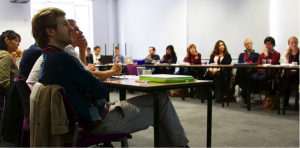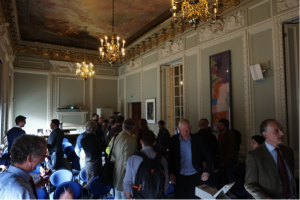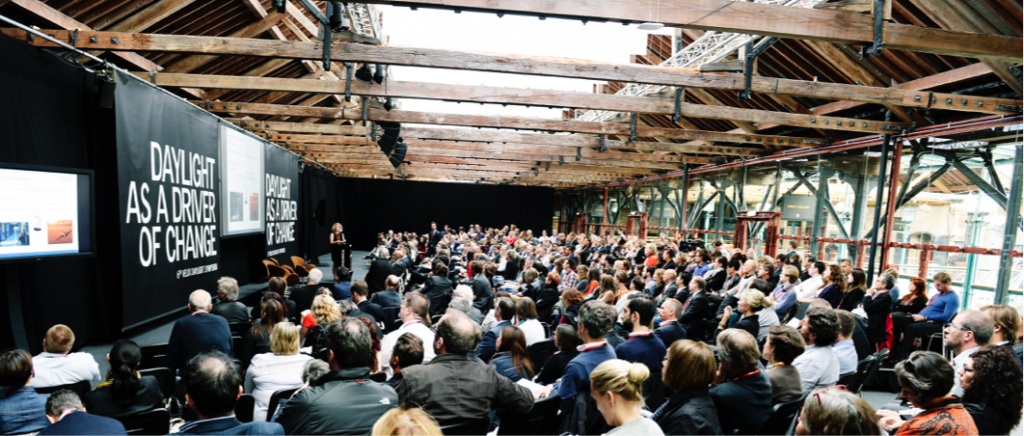2015 is a big year for light as the United Nations proclaimed it the International Year of Light and Light-based Technologies. For daylight in particular, 2015 marks a decade of the VELUX Daylight Symposia; the biannual congregation of the international daylight community for the purpose of exchanging views, experiences and findings from practice and research surrounding the measurement, impact and use of daylight in the built environment.
The 6th VELUX Daylight Symposium was held on September 2-3 with the theme “Daylight as a driver of change” pertaining to daylight issues framed within a modern fast paced world that never seems to sleep (nor turn the lights off for that matter). Presentations from the architecture, engineering and construction industry illustrated the significantly variable challenges faced when designing for well daylit spaces in buildings of different purposes, in different latitudes and even cultural contexts. The dissemination of research output relating to daylight, revealed two main areas of current and future interest: improving daylight assessment in buildings and investigating the bio-physiological impact of daylight on building users and their wellbeing.
 LoLo was represented by PhD student Nafsika Drosou with a presentation and poster on the paper ‘’Uncharted territory: daylight performance and occupant behaviour in classrooms’’ based on her ongoing research project and co-authored with Prof John Mardaljevic and Dr Victoria Haines. Interesting perspectives on daylight were also putforward at the close of each day by an author and an artist respectively. American author Paul Bogard discussed an alarming result of modern city life: the detachment from the concept of natural light of the night, produced by the moon and stars on the night sky.
LoLo was represented by PhD student Nafsika Drosou with a presentation and poster on the paper ‘’Uncharted territory: daylight performance and occupant behaviour in classrooms’’ based on her ongoing research project and co-authored with Prof John Mardaljevic and Dr Victoria Haines. Interesting perspectives on daylight were also putforward at the close of each day by an author and an artist respectively. American author Paul Bogard discussed an alarming result of modern city life: the detachment from the concept of natural light of the night, produced by the moon and stars on the night sky.
Moreover, the renowned Danish-Icelandic artist Olafur Eliasson elaborated on the use of daylight in his works as a means of curating an experience for the audience in order to achieve a connection with them. A perfect example of a building that elicits a connection with the outdoors was the venue, the London Tobacco Docks, as it allowed actual daylight and its variations throughout the day to rightfully take center stage. All presentations and photos are available at the daylightsite.com website.
 For the benefit of PhD students researching daylight, VELUX conveniently hosted the 3rd VELUX Daylight Academic Forum a day before the symposium at London Metropolitan University. As part of it Nafsika, along with 24 other students, had the privilege of spending a full day with eight daylight scientific experts discussing the methodology of each student’s completed and intended work in an informal and collaborative environment. Such forums achieve not only the valuable exchange of experience and knowledge amongst students and mentors, but also the establishment of communication links between the future community of daylight professionals and academics. A taste of the day and discussions of the forum’s benefits for all participants are included in this video.
For the benefit of PhD students researching daylight, VELUX conveniently hosted the 3rd VELUX Daylight Academic Forum a day before the symposium at London Metropolitan University. As part of it Nafsika, along with 24 other students, had the privilege of spending a full day with eight daylight scientific experts discussing the methodology of each student’s completed and intended work in an informal and collaborative environment. Such forums achieve not only the valuable exchange of experience and knowledge amongst students and mentors, but also the establishment of communication links between the future community of daylight professionals and academics. A taste of the day and discussions of the forum’s benefits for all participants are included in this video.
 Last but not least, on October 14 CIBSE’s Daylight Group kick started the academic year with a lecture by Joe Lynes entitled ‘The colour of daylight indoors’. Mr Lynes, a lighting professional whose experience and knowledge on the area of daylight is difficult to match, showcased his talent to deconstruct complex concepts and communicate them in a tangible manner by way of discussing the effects of window glass on colour rendering in indoor spaces. Taking full advantage of the presence of the distinguished speaker, the audience engaged in an extensive and interesting Q&A session exchanging views and experiences from research and practice. The general consensus was that the lighting community would benefit from further opportunities to discuss this particular topic.
Last but not least, on October 14 CIBSE’s Daylight Group kick started the academic year with a lecture by Joe Lynes entitled ‘The colour of daylight indoors’. Mr Lynes, a lighting professional whose experience and knowledge on the area of daylight is difficult to match, showcased his talent to deconstruct complex concepts and communicate them in a tangible manner by way of discussing the effects of window glass on colour rendering in indoor spaces. Taking full advantage of the presence of the distinguished speaker, the audience engaged in an extensive and interesting Q&A session exchanging views and experiences from research and practice. The general consensus was that the lighting community would benefit from further opportunities to discuss this particular topic.
Article by: Nafsika Drosou, LoLo student (Loughborough), 3rd year of PhD
Photo credits: (1-3) Jakob Boserup for VELUX Group, (4) René Løkkegaard Jepsen for VELUX Group, (5) John Mardaljevic

